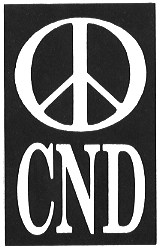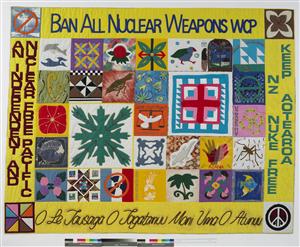Anti-nuclear Groups
These groups are only a small fraction of the groups who participated in anti-nuclear protest in New Zealand. Their dedication and commitment to their cause was a significant factor in the rest of the nation changing their minds on the issue, which allowed the government to enact a law change.
|
Campaign for Nuclear Disarmament (NZ branch)
The NZCND was set up in 1959. It was a merging of anti-nuclear groups from Auckland, Hawkes Bay, Wellington, Christchurch, and Dunedin. The NZCND was founded by two women, Elsie Locke and Mary Woodward. Women were a huge part of the anti-nuclear protest movement, and this shows that. The aim of the CND was a South Pacific Nuclear Free Zone, and the end of the arms race. The CND hosted marches, began petitions, held meetings, and distributed pamphlets. They mailed out pamphlets that encouraged people to declare their towns, suburbs, streets, and houses nuclear-free. |
|
Peace Squadron
The Peace Sqaudron began in about 1975. The Peace Squadron was the name given to the people who rode out in their boats to protest the entry of any nuclear-carrying ships into NZ ports. It began with about 9 people. Their aim was to “challenge the visitation to NZ of any nuclear-weapons “. They wanted to achieve a nuclear free South Pacific. Members of the group would sit up the top of Rangitoto and radio down to the boats on the water, informing them of the navy ships movements. The images of small yachts and kayaks blocking the way of the enormous Navy ships gave more weight to the ‘David and Goliath’ metaphor being used in the media at the time. |


